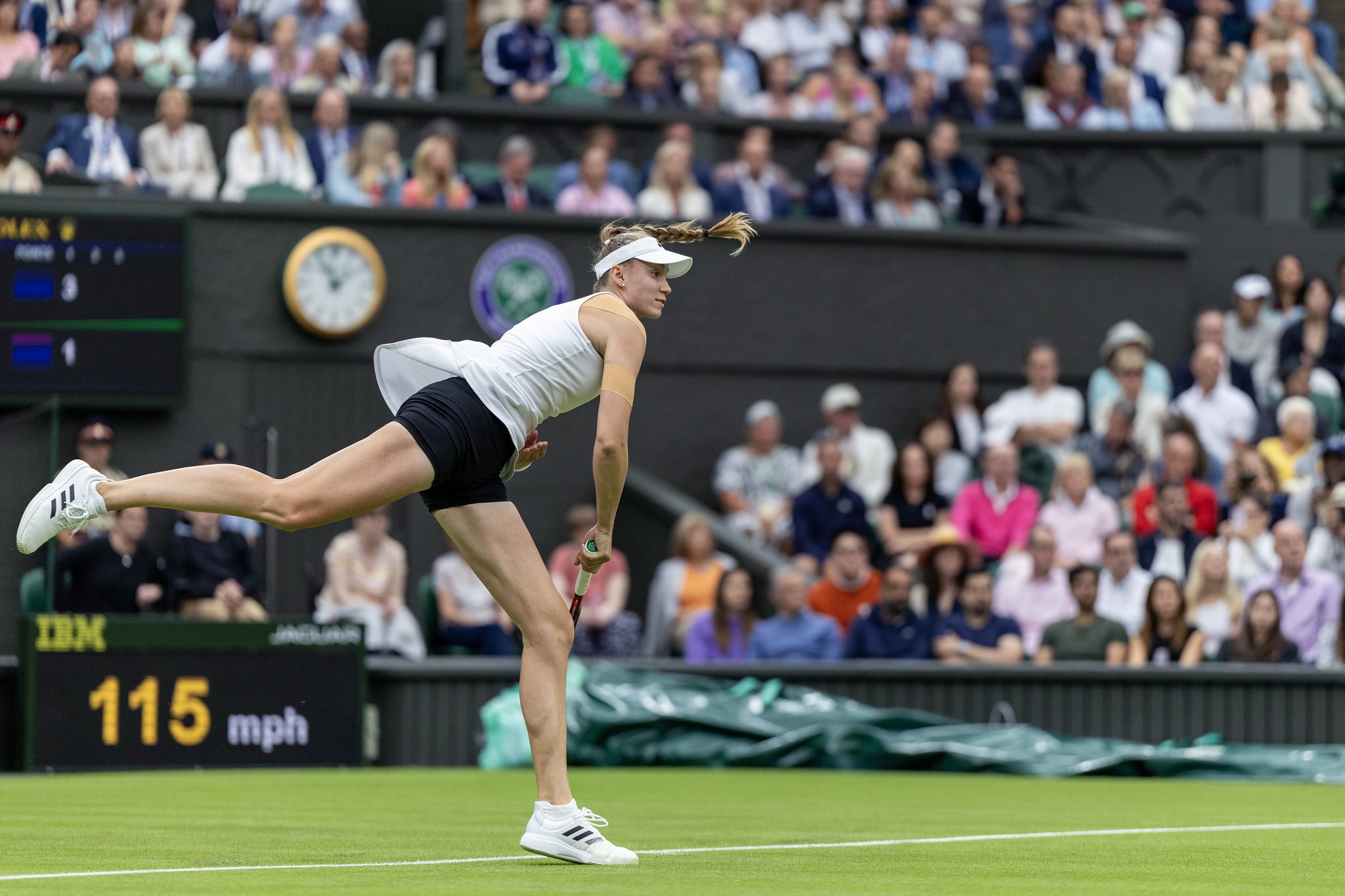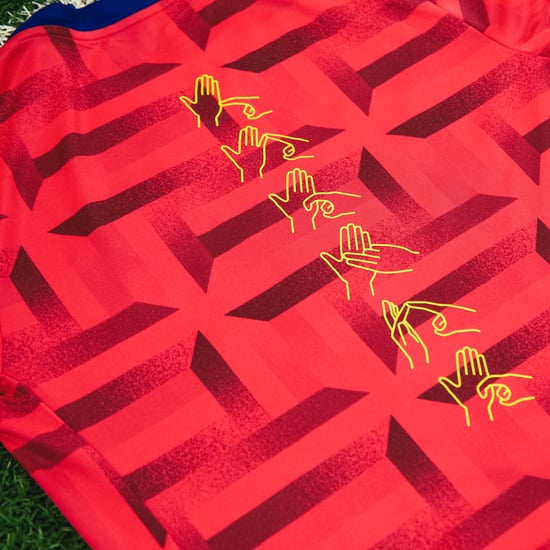Wimbledon Updates Dress Code to Address Period Concerns
Wimbledon Finally Updated Its Victorian-Era Dress Code to Better Support Women Athletes

Wimbledon's strict all-white dress code has been around since the Victorian era, but after former and current players spoke out about their period concerns last year, the rules have been updated. This year's tournament, currently underway, marks the first year the new dress code goes into effect — and athletes are already taking advantage.
The change to Wimbledon's strict dress code was initially announced in November 2022 by the tournament organisers and allows women competitors to wear mid- to dark-coloured undershorts, provided they're no longer than the player's shorts or skirt. The dress code upholds other longstanding guidelines such as "white does not include off white or cream" and "a single trim of colour around the neckline and around the cuff of the sleeves is acceptable but must be no wider than one centimetre."
In the November 2022 statement, the organisers of Wimbledon said that the new rule follows discussions with the Women's Tennis Association, clothing manufacturers, and medical teams about how "best to support women and girls competing at The Championships." Sally Bolton, chief executive of the All England Club (where Wimbledon is held), added, "It is our hope that this rule adjustment will help players focus purely on their performance by relieving a potential source of anxiety."
Elena Rybakina of Kazakhstan, pictured above, was the first player to wear dark shorts during the 2023 tournament, according to Forbes. In a 28 June interview, the defending singles champion told Sky Sports News that all the women players are "really happy" with the change: "One thing is to deal on the court with your opponent, with your own stress and nerves, and if you have additional stress of thinking . . . about the period and stuff, and if your skirt will get dirty, it's additional stress which you don't want to think about. So finally we've got this little adjustment, and I don't think it's gonna hurt the tournament, but for the players, for us, for the girls, it's going to be such a big deal."
Ironically, the all-white dress code was originally enforced because any sign of sweat was considered "rude or improper." It's hard to not roll your eyes at that thought when you consider the real fear players face of menstrual blood showing through their skort. "I cannot imagine going into the biggest day of my life, with my period, and being forced to wear white," tennis broadcaster Catherine Whitaker said in an interview with The Telegraph in June 2022. Former tennis player and Olympic champion Monica Puig also tweeted in response to the discourse, commenting on the stress of wearing white while playing in a tournament.
Definitely something that affects female athletes! Finally bringing it to everyone's attention! Not to mention the mental stress of having to wear all white at Wimbledon and praying not to have your period during those two weeks. https://t.co/PzyHnPlSJk
— Monica Puig (@MonicaAce93) May 31, 2022
Before it was updated, the dress code completely ignored the impact periods can have on athletes — though Wimbledon's uniform isn't the only thing that impacts women athletes disproportionally. Players can only leave the court twice to go to the bathroom during a match (while doubles teams must share their allocated number of breaks). The limitation on bathroom breaks during Wimbledon further highlights how periods are not taken into consideration during the tournament. The lack of acknowledgment means athletes have to invent their own workarounds, like wearing additional pads or using larger-size tampons or birth control strategically just to take care of their reproductive health.
During the 2023 tournament, American player Coco Gauff told Sky News: "I was on my period last year during Wimbledon, and it was very stressful . . . When you go to the bathroom, you're supposed to use the bathroom, but sometimes I would go to the bathroom just to check to make sure that nothing was showing. So I think it's gonna relieve a lot of stress for me and other girls in the locker room for sure."
Menstruation side effects can take a toll, too. Last year, tennis player Qiwen Zheng opened up about how menstrual cramps affected her performance. After Zheng's devastating loss to Iga Swiatek in the French Open, she told reporters, "I cannot play my tennis, (my) stomach was too painful," per CNN. "I wish I can be a man on court . . . so that I don't have to suffer from . . . my stomach pain. I think I could enjoy more, like to run better and to hit harder," she went on to say.
British tennis player Heather Watson told BBC Sport that while she enjoys the traditional element of wearing white, planning her period around the tournament can be stressful and "annoying." She said, "I'll probably go on the pill just to skip my period for Wimbledon. That's the thought process and conversations that girls have about it."
Women athletes aren't the only ones who find the dress code too strict. Tennis players Andre Agassi, Roger Federer, and Rafael Nadal have also expressed frustration by pushing the boundaries on what they wear — Agassi went so far as to boycott Wimbledon between 1988 and 1990 to make his stance clear. However, these players' arguments were about freedom of stylistic expression rather than health reasons.
Wimbledon's response to athletes' concerns is just one step towards a more inclusive environment for professional tennis players, and it's part of a movement that extends beyond the sport. Many football teams are ditching white shorts from their uniforms ahead of the Women's World Cup this summer.
— Additional reporting by Lauren Mazzo






